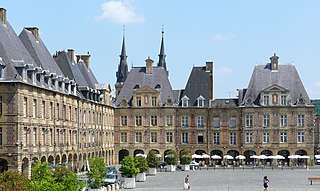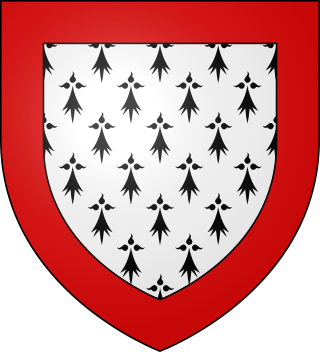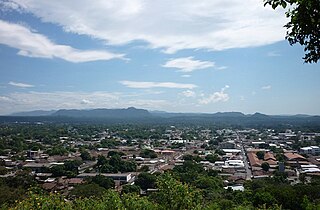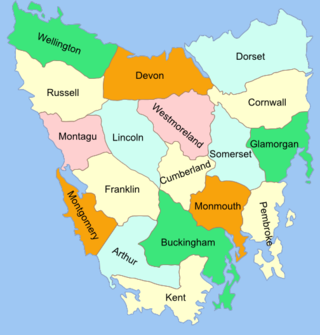
The Encyclopædia Britannica Eleventh Edition (1910–1911) is a 29-volume reference work, an edition of the Encyclopædia Britannica. It was developed during the encyclopaedia's transition from a British to an American publication. Some of its articles were written by the best-known scholars of the time. This edition of the encyclopaedia, containing 40,000 entries, has entered the public domain and is easily available on the Internet. Its use in modern scholarship and as a reliable source has been deemed problematic due to the outdated nature of some of its content. Modern scholars have deemed some articles as cultural artifacts of the 19th and early 20th centuries.

The Kingdom of France was organised into provinces until the National Constituent Assembly adopted a more uniform division into departments (départements) and districts in late 1789. The provinces continued to exist administratively until 21 September 1791.

The Sunda Islands are a group of islands in the Malay Archipelago. They consist of the Greater Sunda Islands and the Lesser Sunda Islands

French Somaliland was a French colony in the Horn of Africa. It existed between 1884 and 1967, at which time it became the French Territory of the Afars and the Issas. The Republic of Djibouti is its legal successor state.
Following is a list of dates in the history of Sunderland, the ancient city in North East England. Facts and figures, important dates in Sunderland's history.

Charleville-Mézières is a commune of northern France, capital of the Ardennes department, Grand Est. Charleville-Mézières is located on the banks of the river Meuse.

Corinto is a town, with a population of 18,602, on the northwest Pacific coast of Nicaragua in the province of Chinandega. The municipality was founded in 1863.

The history of Limousin, one of the traditional provinces of France, reaches back to Celtic and Roman times. The region surrounds the city of Limoges. Limousin is located in the foothills of the western edge of the Massif Central, with cold weather in the winter. Its name is derived from the name of a Celtic tribe, the Lemovices, whose main sanctuary was recently found in Tintignac and became a major site for Celtic study which were found such as the carnyces in the whole Celtic world.

Sonsonate is a city and municipality of El Salvador. Of which it is also its head. It has an estimated population of 72,158 inhabitants for the year 2013, Sonsonate is the second most important city in western El Salvador.The town was founded under the name of "Villa del Espíritu Santo" on vacant lots near the town of los Izalcos in 1552.5 However, this foundation would be extremely ephemeral, because the following year, in 1553, this villa would be transferred to its current location, with the name of "Villa de la Santísima Trinidad de Sonsonate", in a cocoa-producing area. With the passage of time, the town would be known simply by the name of Sonsonate. This name was taken from the Rio Grande or Sonsonate in the Nahuat language, which crosses it from north to south across the entire plain until it flows into the Pacific Ocean. This was the third Spanish population founded in the territories that currently constitute El Salvador, although, it is worth clarifying, during the entire period of Spanish domination of America, Sonsonate was the capital of the Mayor's Office of Sonsonate, a territory apart from the one administered by San Salvador., today the capital of El Salvador.

Thomas Belt, an English geologist and naturalist, was born at Newcastle-on-Tyne in 1832, and educated in that city. He is remembered for his work on the geology of gold bearing minerals, glacial geology, and for his description of the mutualistic relationship between certain bullthorn Acacia species and their Pseudomyrmex ants.

Hagen-Haspe is a borough of the city of Hagen in the state of North Rhine-Westphalia, Germany. It is located in the valley of the Ennepe at the confluence of the Hasper.

The Cordillera de Talamanca is a mountain range that lies in the southeast half of Costa Rica and the far west of Panama. Much of the range and the area around it is included in La Amistad International Park, which also is shared between the two countries.

Rail transport in Costa Rica is primarily under the stewardship of Incofer, an autonomous institution of the state. Incofer owns the national railway infrastructure and operates virtually all freight and passenger services, which consist primarily of commuter trains through the highly populated Central Valley. The whole Incofer network is 1,067 mm narrow gauge, although there are several small tourist railways of other gauges.

Charles II Francis of Austria was an Archduke of Austria and a ruler of Inner Austria from 1564. He was a member of the House of Habsburg.

The Lands administrative divisions of Tasmania are the divisions of Tasmania into land districts and parishes for cadastral purposes, which are part of the lands administrative divisions of Australia. There are 20 land districts in Tasmania, although in the early nineteenth century there were several other systems, with 18 or 36 counties and 9 other divisions used, as well as hundreds. The land districts include the 18 former counties of the island of Tasmania which were renamed but retain the same boundaries, plus King Island and Flinders Island. The counties are referenced in the 1911 Encyclopædia Britannica, with Hobart described as being in Buckingham County, Launceston in Cornwall County and Beaconsfield in Devon County. The land districts are used for land titles today, while the Local Government Areas of Tasmania with cities and municipalities are used for political and administrative purposes.

Totonicapán is a city in Guatemala. It serves as the capital of the department of Totonicapán and as the administrative seat for the surrounding municipality of Totonicapán.

La Veta Pass is the name associated with two nearby mountain passes in the Sangre de Cristo Mountains of south central Colorado in the United States, both lying on the boundary between Costilla and Huerfano counties.
Deer Lodge Pass, elevation 5,879 ft (1,792 m), is a mountain pass on the Continental Divide in southwestern Montana, about 11 miles southwest of Butte. It is traversed by Interstate 15 and is one of three crossings of the Divide by I-15, the others being Monida Pass and Elk Park Pass north of Butte. Unlike most other passes in western Montana, Deer Lodge Pass is in the midst of treeless, rolling hills, and the grades on the highway are relatively gentle.

Ochomogo is a location in the province of Cartago, Costa Rica. It is in a mountain pass between the cities of San José and Cartago. It was the site of the Battle of Ochomogo between those who wanted Costa Rica to join the newly formed First Mexican Empire and those who preferred independence.


















